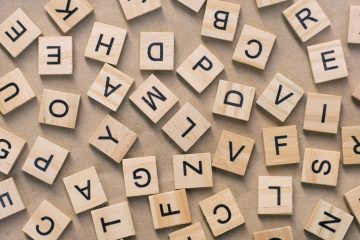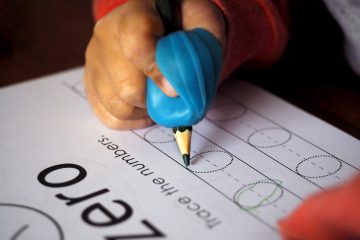 Remember clapping syllables as a kid? Did you ever wonder why your teacher had you do it? It turns out that having knowledge of syllables is yet another way for young readers to figure out new words.
Remember clapping syllables as a kid? Did you ever wonder why your teacher had you do it? It turns out that having knowledge of syllables is yet another way for young readers to figure out new words.
What is a syllable? It’s a way of organizing a sequence of speech sounds in a word. Generally each syllable has a vowel sound, with or without consonant sounds. One way to find the number of syllables in a word is to hold your jaw and count the number of times it drops. Learn more about counting syllables or verify the number of given syllables in a word at How Many Syllables.com.
As your child begins encountering multi-syllabic words, he can benefit from a familiarity with syllables in understanding and interpreting these longer words. There are many ways in which you can familiarize him with syllables, and practice identifying them:
- Clapping out sounds: You can play a simple syllable game with your child by clapping along with each syllable in a given word. You can start with your child’s name, for example, and then expand to the names of your child’s friends (Jon-a-than–3 claps; An-na–2 claps; Mark–1 clap). The clapping game can extend to other words you see or hear in everyday life.
- Pointing out multi-syllabic words in text: When reading, you can highlight multisyllabic words in the book, emphasizing or clapping along with each syllable as you speak it.
- Syllable matching: When you or your child points out the syllables in a word, for example, “elephant,” you can make a game out of finding words with the same number of syllables. Search for words in books, or search around the home. You can suggest longer or shorter words, for example “refrigerator,” and help your child count out the syllables in the word and see if they match.
- Find more activities by searching “syllables” on Pinterest or “syllable activities” on Google.
An understanding of syllables will provide your child with an additional tool when she encounters a new word. For example, if the child recognizes the word “some” and the word “time,” she can more easily read the word “sometime” by seeing it as the combination of those two words.
Longer words can also be broken down into parts that are larger than one phoneme, but still small enough to be read quickly, and don’t necessarily need to be divided along syllabic lines.
Take for example the word “about.” If a child does not know this word, and tries to sound out the sounds /a/, /b/, /o/, /u/, and /t,/ he will probably not be able to come up with the correct word. This is also a word that might be difficult to guess based on context. However, if he “chunks” the word into smaller pieces, reading the word might be easier. If he knows that o-u-t spells “out,” then he knows that the end of this new word is “out.” Adding the /a/ and /b/ sounds at the beginning will more easily lead the child to read the correct word.
If your child is attempting to read a longer word and having difficulty, helping your child break that word into syllables or chunks can provide support. It will also provide a strategy that she can then begin to use when reading independently.
Do you have any great ideas for teaching syllables? Please share them with us here.


